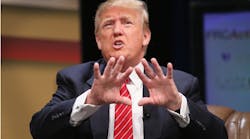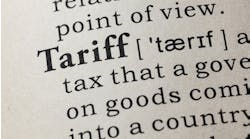With the nomination of Robert Lighthizer as the United States Trade Representative (USTR), the main players in the Trump Administration for international trade matters seem to be in place. Along with Wilbur Ross at the Commerce Department and Peter Navarro in the White House (along with the new President of course), we now know the people who will be driving trade policy in the new Administration.
The nomination of Mr. Lighthizer is a particularly important development because his career as an experienced trade lawyer and advisor, representing domestic industries for several decades, will provide the new Administration with practical knowledge as to the implementation of policies and familiarity with those on Capitol Hill who deal with international trade issues.
Mr. Lighthizer’s advocacy for the U.S. steel industry, his skepticism about Mexican trade relations and NAFTA, and his hostility toward China’s trade practices all make him well suited for policies that Mr. Trump has indicated that he will pursue. As USTR he will be interacting with the newly formed White House National Trade Council as well as with the Commerce Department and other agencies and how the various tasks in the trade agenda are delegated is a work in progress.
Laws New and Old
The provisions that a Trump Administration may use to affect trade on imports fall within two broad categories: those that require legislation and those that can be pursued based on current law. An example of the type of policy that likely would require legislation is the so-called Border Adjustment Tax. Of course, a broad new law, such as one involving Border Adjustment Taxes, would be subject to intense lobbying by affected interests, likely splitting members of Congress.
Current law, however, provides ample room for the Trump Administration to pursue radically new policies without the risk and uncertainty of going through the legislature. Mr. Lighthizer is very familiar with the provisions of section 301 of the Trade Act of 1974 (19 USC
§2411), which authorizes “all appropriate action to obtain the removal of any act, policy, or practice of a foreign government that violates an international trade agreement or is unjustified, unreasonable, or discriminatory, and that burdens or restricts U.S. commerce.” This is broad authority but has not been used extensively in the past in part due to concerns about retaliation on the part of our trading partners. However, the provision provides potentially sweeping changes in tariffs and other restrictions.
Trade Policy and the Chinese
On a China-specific basis, Section 421 of the Trade Act of 1974 (19 USC §2451) could be used by the Administration to request an investigation by the U.S. International Trade Commission (ITC) as to whether there is market disruption or threat thereof as a result of rapidly increasing imports from China causing or threatening material injury. If such disruption is found, the President can impose additional duties on Chinese imports being investigated. In 2009, the Obama Administration used this provision to impose duties on tires from China for a three year period--35% in the first year, 30% in the second year, and 25% in the third year.
Antidumping and Countervailing Duties
Increased use of antidumping and countervailing duties also can be expected. Today, most cases are initiated after Petitions have been filed by a U.S. domestic industry complaining of unfairly low prices or unfair subsidies that injure the U.S. industry. But such cases also can be initiated upon the request of the Administration, and we may see more efforts in this regard.
There also may be self-initiation of cases filed by the Administration at the ITC under Section 201 of the Trade Act of 1974 (19 USC §2251), which is filed against all imports of a product from everywhere in the world. The ITC determines whether an article is being imported in such increased quantities that it is a substantial cause of serious injury, or threat of such injury, to the U.S. industry producing an article like or directly competitive with the imported article. If the ITC makes an affirmative determination, it recommends relief to the President, which may be in the form of increased tariffs, quotas, or tariff rate quotas. This provision was used by the U.S. steel industry in 2002.
There are additional provisions on the books that also could be used, but in our view trade actions under Sections 201. 301 and 421 are likely to be the most likely vehicles, at least initially, for achieving the Trump Administration’s goals.
Conclusion
Converting the new administration’s promised changes in import trade policy into concrete actions would entail a major effort, but the tools are there to disrupt imports; however, these same policy tools also risk counter-actions by our trading partners. The first six months of the new Administration should provide greater clarity as to how these policies will play out--and how much risk the Trump Administration decides to take on to achieve some of the policy objectives articulated thus far.




